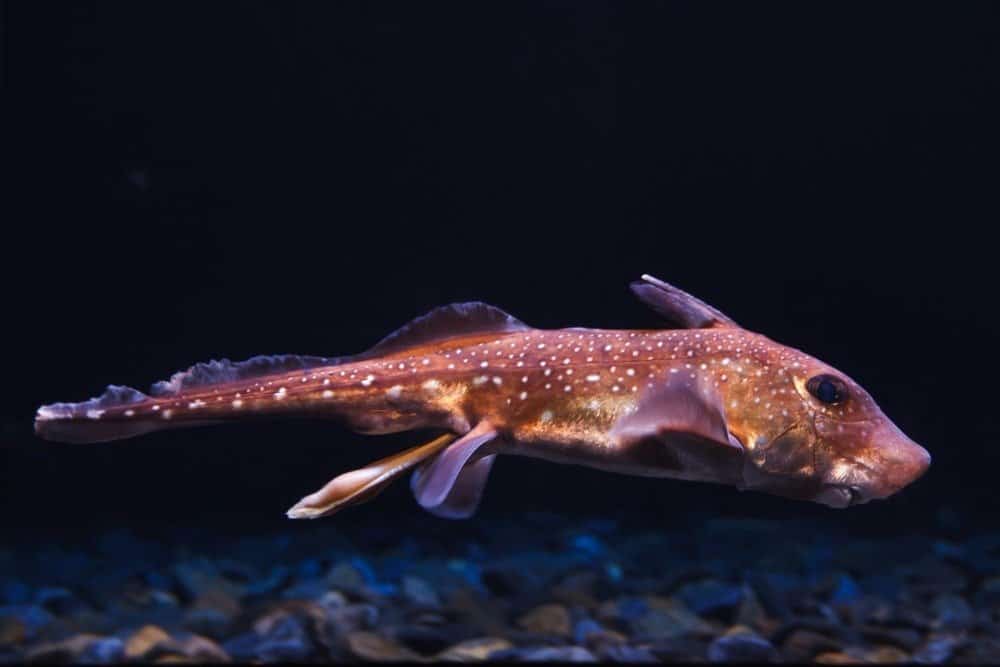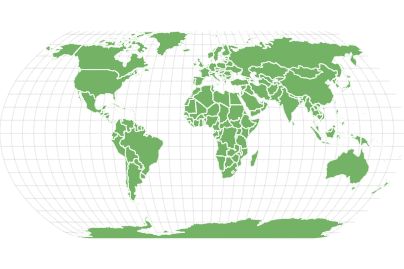Chimaera
.jumbotron {
background-image: url(“https://a-z-animals.com/media/Chimaera-1-400×300.jpg”);
}
}
@media only screen and (min-width: 641px) and (max-width: 920px) {
.jumbotron {
background-image: url(“https://a-z-animals.com/media/Chimaera-1-470×370.jpg”);
}
}
@media only screen and (min-width: 921px) {
.jumbotron {
background-image: url(“https://a-z-animals.com/media/Chimaera-1.jpg”);
}
}
Chimaera
Chimaeraformes
Also called ghost shark
Chimaera Scientific Classification
- Kingdom
- Animalia
- Phylum
- Chordata
- Class
- Chondrichthyes
- Order
- Chimaeraformes
- Scientific Name
- Chimaeraformes
Read our Complete Guide to Classification of Animals.
Chimaera Conservation Status
Chimaera Facts
- Prey
- Molluscs, crabs, marine worms
- Fun Fact
- Also called ghost shark
- Biggest Threat
- Commercial fishing trawlers
- Most Distinctive Feature
- Dead eyes, fleshy snouts
- Other Name(s)
- Rabbitfish, rat fish, ghost shark
- Gestation Period
- 6-12 months
- Habitat
- Deep ocean
- Predators
- Humans, sharks, larger fish
- Diet
- Carnivore
- Type
- Chimaeraformes
- Common Name
- Chimaera, ghost shar
- Number Of Species
- 48
This post may contain affiliate links to our partners like Chewy, Amazon, and others. Purchasing through these helps us further the A-Z Animals mission to educate about the world’s species..

Spiders that fly! Fish that walk! And 1000+ more incredible animals. Discover them all for FREE
.photo-gallery {
–margin: 0px auto 0px;
–padding: 0px 0px 0px 0px;
}
.gallery-link {
background-image: url(“https://a-z-animals.com/media/Chimaera-1.jpg”);
background-repeat: no-repeat;
background-size: cover;
background-position: center;
height: 500px;
justify-content: center;
text-align: center;
align-items: center;
display: flex;
border: 2px solid #000;
}
.gallery-link img {
height: 50%;
}
@media only screen and (max-width: 768px) {
.gallery-link {
height: 300px !important;
}
}
View all of the Chimaera images!
The chimaera is a unique, cartilaginous fish that lives in the depths of the ocean and is closely related to sharks, skates and rays.
Not much is known about their lifestyle or reproductive habits, but scientists have identified over 50 chimaera fish species throughout the world’s oceans.
Each family of chimaera fish has a distinctive, somewhat gruesome appearance, and they are often collectively referred to as “ghost sharks” because of their strange, pale coloring.
Incredible Chimaera Facts!
- There are over 50 species of chimaera fish living in the ocean today.
- Chimaera use special electroreceptors on their snouts to help them sense prey.
- Chimaeras are part of the subclass Holocephali, which is over 420 million years old.
- Several species have venomous dorsal spines that protect them from humans and predators.
- Chimaeras have completely scaleless skin.
Chimaera Classification and Scientific Name
Chimaeras are part of the order Chimaeraformes, which subdivides into three families:
- Callorhinchidae, meaning “plough-nosed” chimaera
- Chimaeridae, meaning “short-nosed” chimera
- Rhinochimeridae, meaning “long-nosed” chimaera
The term “chimera” or “chimaera” is also used to describe a mythical lion-goat-snake hybrid creature. While these chimaeras do not bear any resemblance to their Greek mythology counterparts, the name does evoke a feeling of mystery.
Common names for chimaeras include ghost shark, rat fish, spook fish and rabbit fish. These names all stem from the chimaeras unique appearance.
Chimaera Species
Current knowledge shows that there are about 50 species of chimaera fish that currently live in the deep ocean. Because so little is known about deep-sea creatures, researchers are constantly updating taxonomical information as new species are discovered.
Some of the best-known species of chimaera include the following:
- Rabbit fish: This species is also known as Chimera monstrosa. Its name comes from its large head and small, tapering body.
- Pale chimaera: They are also sometimes called the “pale ghost shark.” They are endemic to New Zealand, and they have a distinctive whitish-gray coloring that gives them their ghostlike appearance.
- Small-spine spookfish: This unusual creature is part of the long-nosed chimaera family. It is small and pure white, and it has a thin, curved snout that is covered in nerve endings to help it hunt.
Chimaera Appearance
Because there are so many species of chimaeras that live in the deep waters of oceans around the globe, there are many variations of size, shape, coloring and distinguishing features. This means that it would be impossible to describe every known species of chimaera.
Instead, it would be more useful to look at the average appearance of members of each family of chimaeras.
Plough-nosed Chimaeras
This family of chimaeras is also commonly referred to as “elephant fish.” They are the only surviving members of the Callorhinchus genus. While they behave similarly to the other members of the chimaera order, they are distinguished by their long, flexible and fleshy snouts. These “trunks” are used to search the sea bottom for the small invertebrates that it feeds on. Their snouts can also sense movement and electrical fields, which makes them better hunters.
They typically grow up to 4 feet long and have flat, elongated bodies. Their coloring is usually a mixture of black and brown patches, and they have distinctively large pectoral fins that help them navigate waters quickly.
Short-nosed Chimaeras
Short-nosed chimaeras are often called “ratfish” because of their long, tapering tails. They can grow to be between 1 and 5 feet long, including their tails, and they have a distinctive, venomous spine on their backs that is potent enough to injure a human. Most are brown in color.
Long-nosed Chimaeras
Long-nosed chimaeras have the long, paddle-like snouts of elephant fish as well as the long, tapering tails of rat fish. They are typically pale in color and can grow up to 4.5 feet in length. Like the short-nosed chimaera, they also have a small, venomous dorsal spine.

Vladimir Wrangel/Shutterstock.com
Chimaera Distribution, Population and Habitat
Chimaeras can be found in all of the world’s oceans except the Arctic. They typically live between 650-8,500 feet below the ocean’s surface. This means that they are considered deep-sea creatures because they reside in the twilight and midnight zones of the ocean.
It is difficult for researchers to gather information about deep-sea dwellers, so much of the information that has been gathered requires further verification.
The majority of chimaera species live near muddy bottoms of underwater ridges, continental shelves, and oceanic islands. This is because they feed on small fish and invertebrates that often burrow into these ocean floors.
The exact population numbers for chimaeras are not known, but they are currently listed as a species of least concern by the IUCN.
Chimaera Predators and Prey
Chimaeras typically eat crabs, mollusks, sea urchins, marine worms, and small octopuses. They have multiple rows of tough, mineralized tooth plates that allow them to crush their prey.
In general, the main predators for chimaeras are larger fish and sharks. Humans are also a threat to certain species of chimaeras that can be found closer to the surface of the ocean.
In addition, while they may not technically be considered predators, scientists have noted that chimaeras are often covered in parasite colonies. One research trip collected nine separate parasite species on a single fish.
Chimaera Reproduction and Life Span
Unfortunately, little is known about the life span and reproductive habits of chimaeras.
Like some of their skate and shark relatives, chimaeras lay eggs onto flat, muddy sea beds. Females lay eggs in pairs, and they can lay multiple pairs during each breeding season. The number of eggs laid depends on the species, and researchers believe that it takes anywhere from 6 to 12 months for the eggs to hatch.
Chimaera hatchlings are usually about 5 inches long, and they look like miniature versions of their adult counterparts. Most deep-sea fish have little interaction with their young because they grow and develop in a shallower strata of the ocean, so there is almost no overlap in their habitats.
Researchers do not know what the average life span is of a chimaera in the wild, but they have been known to live up to 30 years.
Chimaera in Fishing and Cooking
Chimaeras are edible, but they are not a common food source for humans. Like many fish, they have parasite colonies that live on their skin and in their gills. The rabbit fish in particular is thought of as a novelty seafood dish, and some people will also eat ghost fish alongside mussels, clams or shrimp. In the past, chimaera liver oil was valuable as a lubricant for guns and certain instruments.
Most chimaeras are not actively sought by fishermen, but they may be what is known as a “bycatch,” which means that they are caught alongside other targeted species.
Chimaera Population
The current population numbers for the chimaera are not known. Chimaeras in general are poorly understood by scientists, and there is a lack of useful, up-to-date information on their biology, habits, and numbers.
View all 157 animals that start with C
Chimaera FAQs (Frequently Asked Questions)
What is a chimaera?
A chimaera is a cartilaginous, deep-sea fish that is closely related to sharks and rays.
Where are chimaera fish found?
Chimaeras can be found around the world in ocean depths between 650-8,500 feet.
How do you pronounce chimaera?
Chimaera is pronounced, “kuh-MEER-uh.”
Why is the chimaera known as the “rabbit fish?”
The “rabbit fish” nickname refers to Chimaera monstrosa, a chimaera species with a distinctively large head, large eyes, oversized nostrils and large tooth plates. These features give it a rabbit-like appearance.
Are chimaeras poisonous?
Short-nosed and long-nosed chimaeras both have a venomous spine on their backs that can be dangerous and painful to humans.
Where does the chimaera live?
The chimaera lives in the depths of every ocean in the world except the Arctic. It can be found in the twilight and midnight zones of the ocean.
Are Chimaeras herbivores, carnivores, or omnivores?
Chimaeras are Carnivores, meaning they eat other animals.
What Kingdom do Chimaeras belong to?
Chimaeras belong to the Kingdom Animalia.
What phylum do Chimaeras belong to?
Chimaeras belong to the phylum Chordata.
What class do Chimaeras belong to?
Chimaeras belong to the class Chondrichthyes.
How do Chimaeras have babies?
Chimaeras lay eggs.
Sources
- Wikipedia, Available here: https://en.wikipedia.org/wiki/Chimaera
- World Atlas, Available here: https://www.worldatlas.com/articles/the-5-layers-of-the-ocean.html
- Encyclopedia.com, Available here: https://www.encyclopedia.com/environment/encyclopedias-almanacs-transcripts-and-maps/chimaeriformes-chimaeras
- Shark Trust, Available here: https://www.sharktrust.org/chimaera
- Britannica, Available here: https://www.britannica.com/animal/chimaera
















